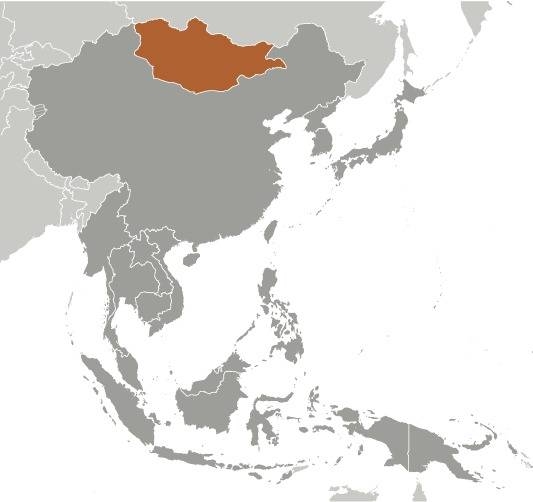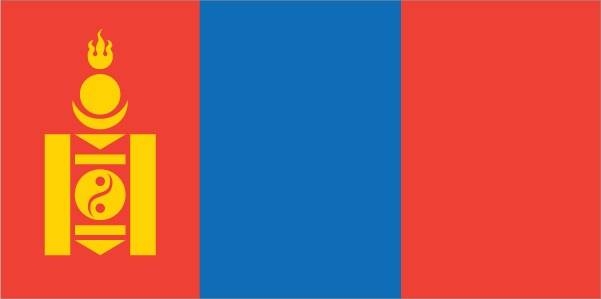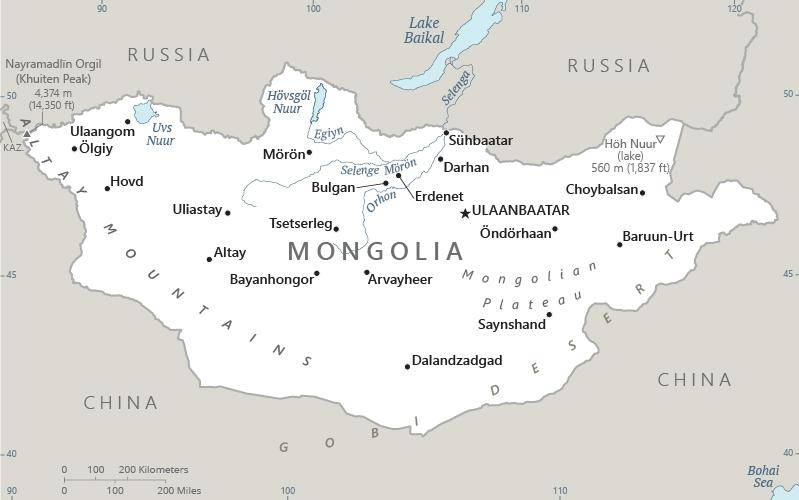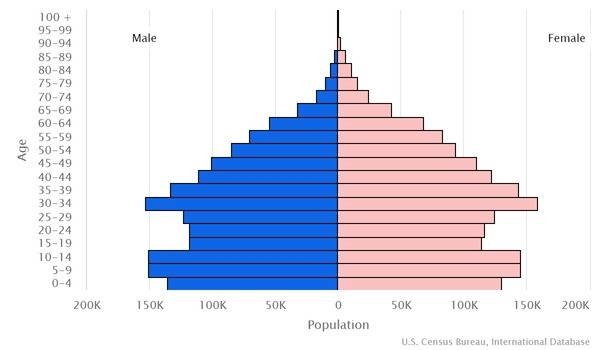Country Summary




Introduction
Background
The Mongols gained fame in the 13th century when they established a huge Eurasian empire through conquest. The Mongols eventually retired to their original steppe homelands and in the late 17th century came under Chinese rule. The Mongolian Revolution of 1921 ended Chinese dominance, and a communist regime, the Mongolian People’s Republic, took power in 1924.
Geography
Area
total: 1,564,116 sq km
land: 1,553,556 sq km
water: 10,560 sq km
Climate
desert; continental (large daily and seasonal temperature ranges)
Natural resources
oil, coal, copper, molybdenum, tungsten, phosphates, tin, nickel, zinc, fluorspar, gold, silver, iron
People and Society
Population
3,227,863 (2022 est.)
Ethnic groups
Khalkh 83.8%, Kazak 3.8%, Durvud 2.6%, Bayad 2%, Buriad 1.4%, Zakhchin 1.2%, Dariganga 1.1%, other 4.1% (2020 est.)
Languages
Mongolian 90% (official) (Khalkha dialect is predominant), Turkic, Russian (1999)
Religions
Buddhist 51.7%, Muslim 3.2%, Shamanist 2.5%, Christian 1.3%, other 0.7%, none 40.6% (2020 est.)
Population growth rate
0.88% (2022 est.)
Government
Government type
semi-presidential republic
Capital
name: Ulaanbaatar
Executive branch
chief of state: President Ukhnaagiin KHURELSUKH (since 25 June 2021)
head of government: Prime Minister Luvsannamsrai OYUN-ERDENE (since 27 January 2021); Deputy Prime Minister Ulziisaikhan ENKHTUVSHIN (since 18 October 2017)
Legislative branch
description: unicameral State Great Hural or Ulsyn Ikh Khural (76 seats; members directly elected in single-seat constituencies by simple majority vote; each constituency requires at least 50% voter participation for the poll to be valid; members serve 4-year terms)
Economy
Economic overview
lower middle-income East Asian economy; large human capital improvements over last 3 decades; agricultural and natural resource rich; Chinese border closures and COVID-19 hurt; growth and poverty decline mainly in rural areas
Real GDP (purchasing power parity)
$37.6 billion (2020 est.)
Real GDP per capita
$11,500 (2020 est.)
Agricultural products
milk, wheat, goat milk, potatoes, mutton, sheep milk, beef, goat meat, horse meat, carrots/turnips
Industries
construction and construction materials; mining (coal, copper, molybdenum, fluorspar, tin, tungsten, gold); oil; food and beverages; processing of animal products, cashmere and natural fiber manufacturing
Exports
$7.65 billion (2020 est.)
Exports - partners
China 81%, Switzerland 9% (2019)
Exports - commodities
coal, copper, gold, iron, crude petroleum (2019)
Imports
$7.34 billion (2020 est.)
Imports - partners
China 31%, Russia 29%, Japan 10%, South Korea 5% (2019)
Imports - commodities
refined petroleum, cars, delivery trucks, construction vehicles, aircraft (2019)
Exchange rates
togrog/tugriks (MNT) per US dollar -
Page last updated: Monday, September 12, 2022
